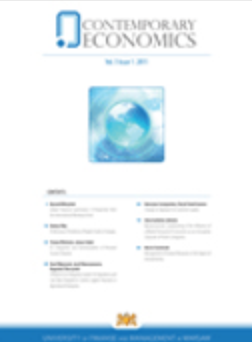Location Theory and Multi-Criteria Decision Making: An Application of the MOORA Method
Location Theory and Multi-Criteria Decision Making: An Application of the MOORA Method
Author(s): Willem K. M. BrauersSubject(s): Business Economy / Management, Methodology and research technology, Economic development
Published by: Akademia Ekonomiczno-Humanistyczna w Warszawie
Keywords: Location Theory; Input-Output Analysis; MOORA; MULTIMOORA; Objectives; Alternatives; Simulation; Ratio Analysis; Reference Point Method;
Summary/Abstract: The first systematic research on Location Theory dates back to 1826. Quantitative approaches came much later. On the supply side extensive Input-Output Tables can be mentioned and on the demand side the optimization by Multi-Criteria Decision Making. The advantages of Input-Output Tables for location opportunities on a regional and urban basis have to be emphasized, whereas the link is made between Input-Output and Multi-Criteria Optimization. MOORA, Multi-Objective Optimization by Ratio Analysis, is composed of two methods: Ratio Analysis and Reference Point Theory and responds to the different conditions of robustness needed for optimization. This approach attempts to localize in an optimal way a certain project facing different indicators, criteria or objectives sometimes originating from different groups or individuals. Here however type and importance of objectives and alternatives were only simulated. The real stakeholders to be considered are rather the national and local authorities, the contributing firms and their personnel. In the production sphere consumer sovereignty was only indirectly involved. If consumers, via consumer organizations and trade unions, were directly involved, other claims could emerge. The simulation used was limited in its applications. Clearly if this simulation has no practical consequences, it still provides a learning experience with the use of the MOORA Method in its double composition.
Journal: Contemporary Economics
- Issue Year: 12/2018
- Issue No: 3
- Page Range: 241-252
- Page Count: 12
- Language: English

